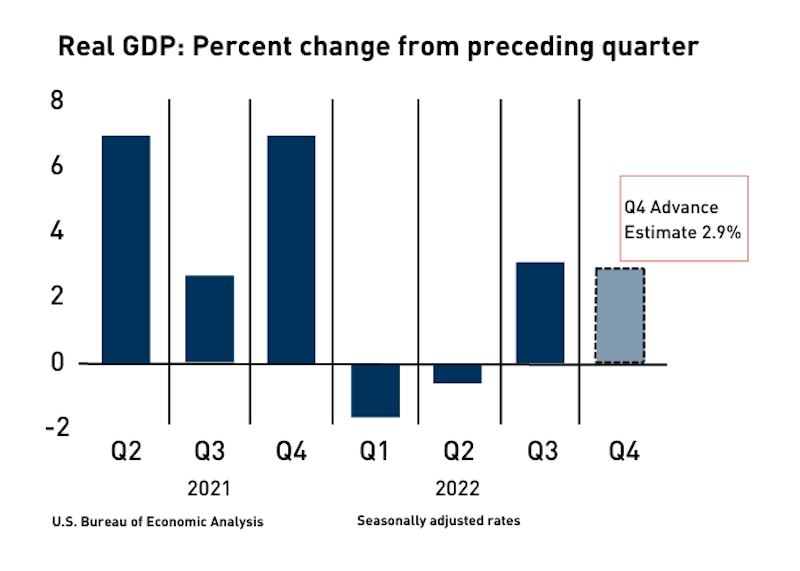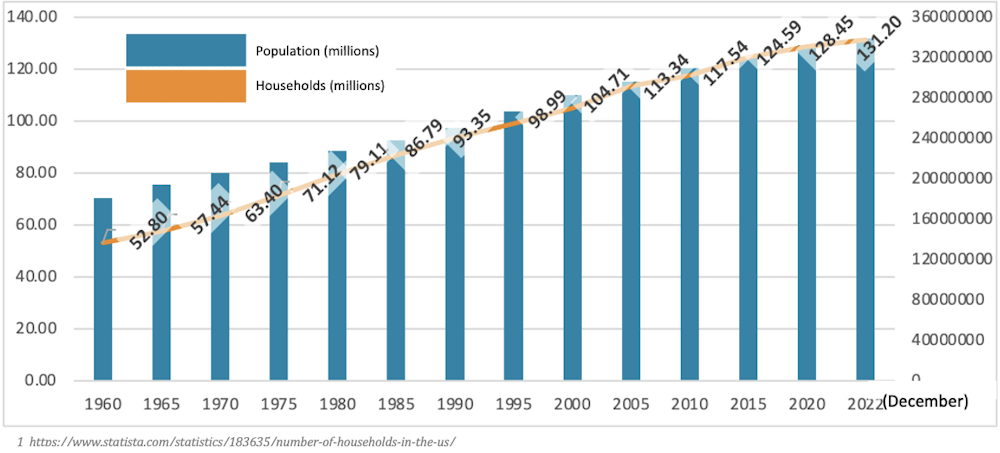Challenges to Homeownership


It’s hard to predict what the year will bring. There are some projections that the economy will have a soft landing1.1 while others are bracing for a recession1.2. As we look at the coming year there are key indicators that we monitor and among those are several showing positive signs for the US economy and the housing market. The Fed pulled out their number one play in order to curb inflation and that has been working. Home prices are cooling off, but we also need to look at the current state of inventory compared to the growing population, especially those in their homebuying years. Across our regions we are seeing a rise in consumer confidence as home prices come down. Affordability is a major concern for first time buyers and as they return to market the competition for existing inventory will heat back up. Can we expect another hot market in 2023? We will also take a look at current mortgage rates which will lead the way for market corrections and have an impact on consumer confidence.
One of the best indicators for the US economy is the GDP which is “a comprehensive measure of U.S. economic activity. GDP measures the value of the final goods and services produced in the United States (without double counting the intermediate goods and services used up to produce them). Changes in GDP are the most popular indicator of the nation's overall economic health”1. Since the first two quarters of 2022, where there was clear slowdown after artificial inflation from the end of 2021, the data shows the economy may be stabilizing.
In a recent Economic outlook webinar, hosted by The True Life Companies CFO and COO Chris Crawford and CEO & Chairman Scott Clark, Chris noted that the economy “reflects some inflation, but more controlled inflation as the Fed is toggling interest rate levers. [However] we're still in a period of adjustment on a national basis, and on a micro level in regions where we are present. There are still significant housing shortages, strong incomes, low unemployment. All those are key indicators for all of us.”
One of the great contributors to the consistent GDP growth is the population growth in our country2. Alongside population growth is household formations which is a strong indicator for demand in the housing market. Scott Clark explains why during our economic webinar, “When we are in an all-time high percentage of the 330+ million Americans that are in the 25-39 year old range, and it grows for about another 5 to 10 years followed by Generation Y and Generation Z, we really keep an eye on that household creation number because that is the group that end up deciding it’s time to buy their first house”. These are the groups that need housing options and that will continue to grow our economy.

Another dataset that is a positive indicator for the economy is the producer price index of cost of materials used for home construction. According to data collected by the Associated General Contractors of America, the prices for lumber, plastic, concrete, copper, and gypsum (which is used in the manufacturing of dry wall3) have all dropped from their peak during 2020 and are trending back to typical prices4. This is good news in the medium and long term as it affects the top line pricing for new homes and shows that the supply chain is coming back online, easing pressure on businesses, and particularly, the nation’s home builders.
The trickle-down effect from the cost to build is now creating a slight uptick in consumer confidence. The Home Purchase Sentiment Index from Fannie Mae indicates that “39% of respondents plan to buy a home in the next 12 months which has only been surpassed once in the history of the survey going back to 2014”, according to John Lovallo of UBS. He goes on to mention that “70% of respondents believed finding an affordable home would be ‘somewhat-to-very easy’”5, this analysis from Mr. Lovallo indicates that there are buyers who are going to make concessions in their home search when it comes to size and location in order to find a home they can afford. We believe clearly shows that the demand to own a piece of the American dream is still alive and, as we know from the population graph above, is not slowing down.
While home buyers are beginning to feel optimistic about their chances of buying a home in 2023 the existing inventory is still historically low and that will be their main obstacle. According to Realtor.com, the number of homes for sale in December increased by 54.7% compared to last year but is still 38.2% lower than it was in the years just prior to the pandemic in 2017 to 20196. There is a historically low number of homes for sale with the current count sitting right around 860,000 homes across the country7. With low inventory affordability will remain a challenge as “prices are still significantly higher, and homes are selling faster compared to 2019 pre-pandemic levels. Although demand has softened compared to last year — pushing home price growth into single-digit territory for the first time in 12 months — moderation in home-price growth may encourage more buyers to return to the market in the months ahead, and may also be welcome news for sellers aiming to sell and buy at the same time”, said Danielle Hale, Chief Economist for Realtor.com8.
The housing market is still in a correction and the Fed Chair, Jerome Powell, says this reset will continue until “supply and demand get better aligned so that housing prices go up at a reasonable level and at a reasonable pace and that people can afford houses again9”. Right now there is significant pressure on housing affordability and experts say if that continues home sales will remain weak, housing prices will fall and mortgage rates will soon follow10.
Scott Clark and Chris Crawford provide their thoughts on what we can expect to see in the coming year. “ year we're anticipating a slight recession. It's a normal thing in the economy”, says Scott Clark. Chris Crawford agrees and points out that “unemployment is still too low and interest rates will still rise as the Fed keeps inflation at a level they are more comfortable with. Overall, there are more positives than negatives and combine that with a housing market that is starving for inventory” we maintain a pragmatic outlook for our economy in 2023.
 © Copyright 2024, The True Life Companies. All Rights Reserved. Website Design by Kovach Marketing. Development & Hosting by Blue Tangerine.
© Copyright 2024, The True Life Companies. All Rights Reserved. Website Design by Kovach Marketing. Development & Hosting by Blue Tangerine.